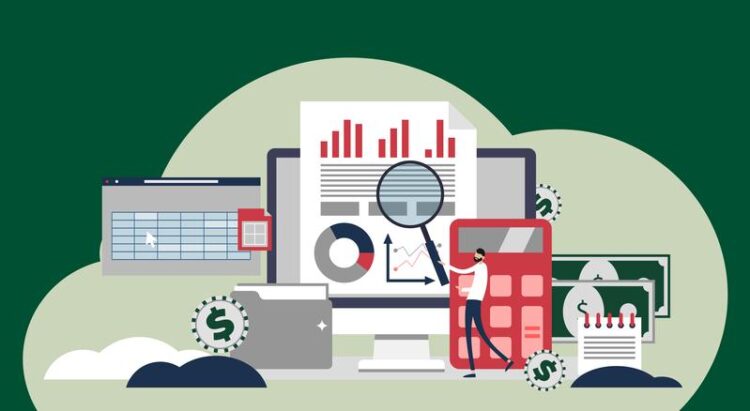WifOR has published its Impact Valuation factors

WifOR's Impact Valuation Factors
(c) WifOR Institute
What are the societal impacts of a company’s CO₂ emissions? What is the value of research and development for the community? To enable comparison and valuation of non-financial metrics, Impact Valuation factors translate sustainability figures into a uniform currency. However, organizations use different methods to evaluate their sustainability performance and most of these methods are not publicly available. With a strong commitment to comparability and transparency, WifOR has published its Impact Valuation factors.
“Our mission is to set standards in measuring and valuing sustainability. Pursuing this mission thrives on constructive collaboration. We aim to continuously develop the method and promote scientific discourse, which is why we’ve made our method publicly available,” says Dr. Richard Scholz, Head of Impact Analysis at WifOR Institute.
What are Impact Valuation factors?
Impact Valuation factors convert physical units, such as tons of greenhouse gas emissions or the number of occupational accidents, into US dollars or euros. Thereby, the social significance of these impacts can be compared both within social, environmental, and economic dimensions and with financial indicators. This facilitates the inclusion of social and environmental impacts in the decision-making process, which would otherwise risk not being accounted for.
What should be considered when using Impact Valuation factors?
Impact Valuation factors allow for a meaningful comparison of the social impacts arising from corporate activities, enabling companies to better understand the significance of their activities and to manage them more effectively. At the same time, impacts are complex and multidimensional. Therefore, it is not possible to capture a company’s entire contribution to society through monetization. Transparency in the definition and measurement of indicators is crucial for the acceptance and credibility of the method. In addition, negative impacts are not to be masked by positive ones (known as “netting”).
Which complexities arise when monetizing social and environmental indicators?
When dealing with social and environmental indicators, the translation of total impacts into monetary terms becomes challenging. This is primarily due to the subjective nature of evaluating social and environmental values. Nonetheless, monetization is regarded as a crucial instrument in integrating social and environmental risks as fundamental elements of the decision-making process – marking a shift away from merely incorporating them after conducting an economic cost-benefit analysis.
Are value contributions that already exist in US dollars or euros translated 1:1 into human well-being?
The impact of corporate activities on human well-being is complex and depends on various factors. If a value is already given in US dollars or euros, it is not directly translated into human well-being. This can be illustrated by the example of wages, which are recorded in monetary units. Socially, there are different welfare implications depending on the distribution of salaries within a company. For instance, having many low earners alongside a few employees earning significantly above-average salaries produces different outcomes compared to a more balanced salary distribution. Currently, this is reflected in the “fair wage” indicator. An exception is the gross value added of companies. In this instance, monetary units such as US dollars or euros are used directly for the impact assessment in order to enable comparability with economic variables and national targets.
About WifOR
As experts in scientific macroeconomic analysis, we translate data into the basis for decision-making. We see ourselves as a think tank initiating public discourse and developing valid metrics for challenging international issues. We target transparency and comparability – at company, sector, and national level. Our clients and project partners include companies, government ministries, NGOs, and associations. Through our projects, we deliver scientific research and act as a sparring partner for clients in an increasingly complex world, enabling them to make evidence-based decisions. WifOR has over 70 employees with offices located in Berlin, Darmstadt, Leipzig, and Athens, as well as representatives in Latin America and the USA.
Wissenschaftliche Ansprechpartner:
Dr. Richard Scholz
Head of Impact Analysis
richard.scholz@wifor.com
Weitere Informationen:
All latest news from the category: Business and Finance
This area provides up-to-date and interesting developments from the world of business, economics and finance.
A wealth of information is available on topics ranging from stock markets, consumer climate, labor market policies, bond markets, foreign trade and interest rate trends to stock exchange news and economic forecasts.
Newest articles
Faster, more energy-efficient way to manufacture an industrially important chemical
Zirconium combined with silicon nitride enhances the conversion of propane — present in natural gas — needed to create in-demand plastic, polypropylene. Polypropylene is a common type of plastic found…

Energy planning in Ghana as a role model for the world
Improving the resilience of energy systems in the Global South. What criteria should we use to better plan for resilient energy systems? How do socio-economic, technical and climate change related…

Artificial blood vessels could improve heart bypass outcomes
Artificial blood vessels could improve heart bypass outcomes. 3D-printed blood vessels, which closely mimic the properties of human veins, could transform the treatment of cardiovascular diseases. Strong, flexible, gel-like tubes…





















